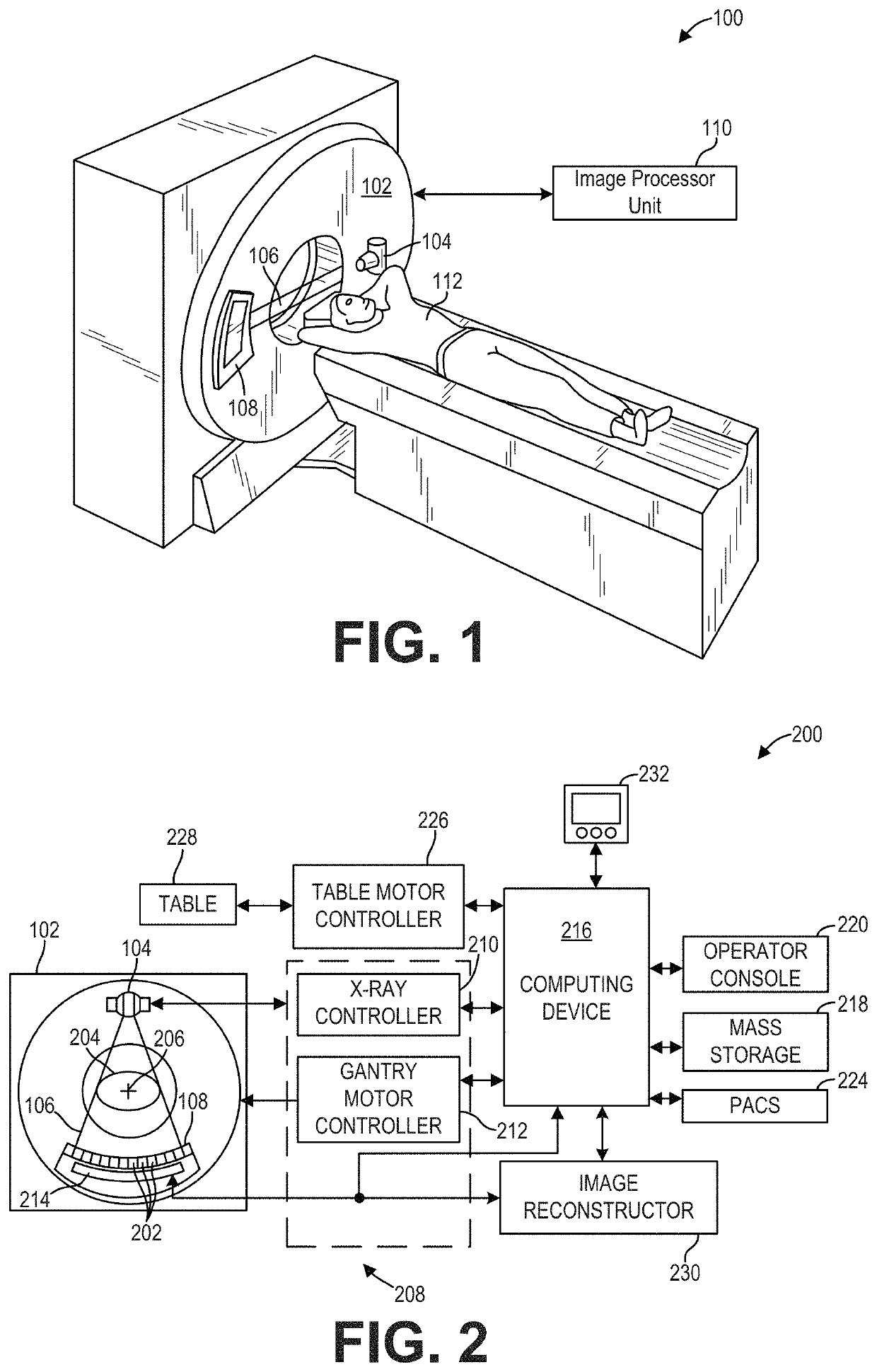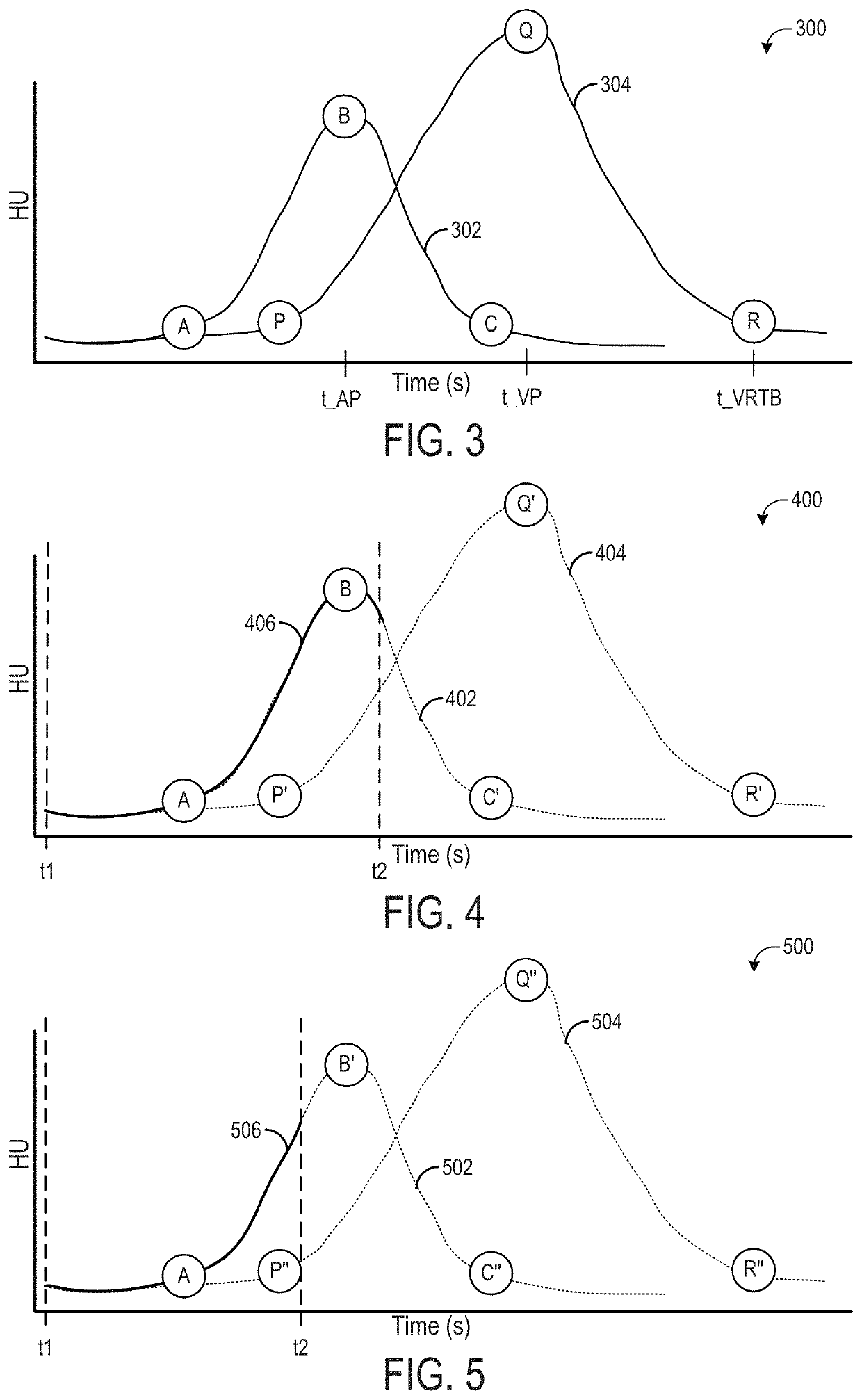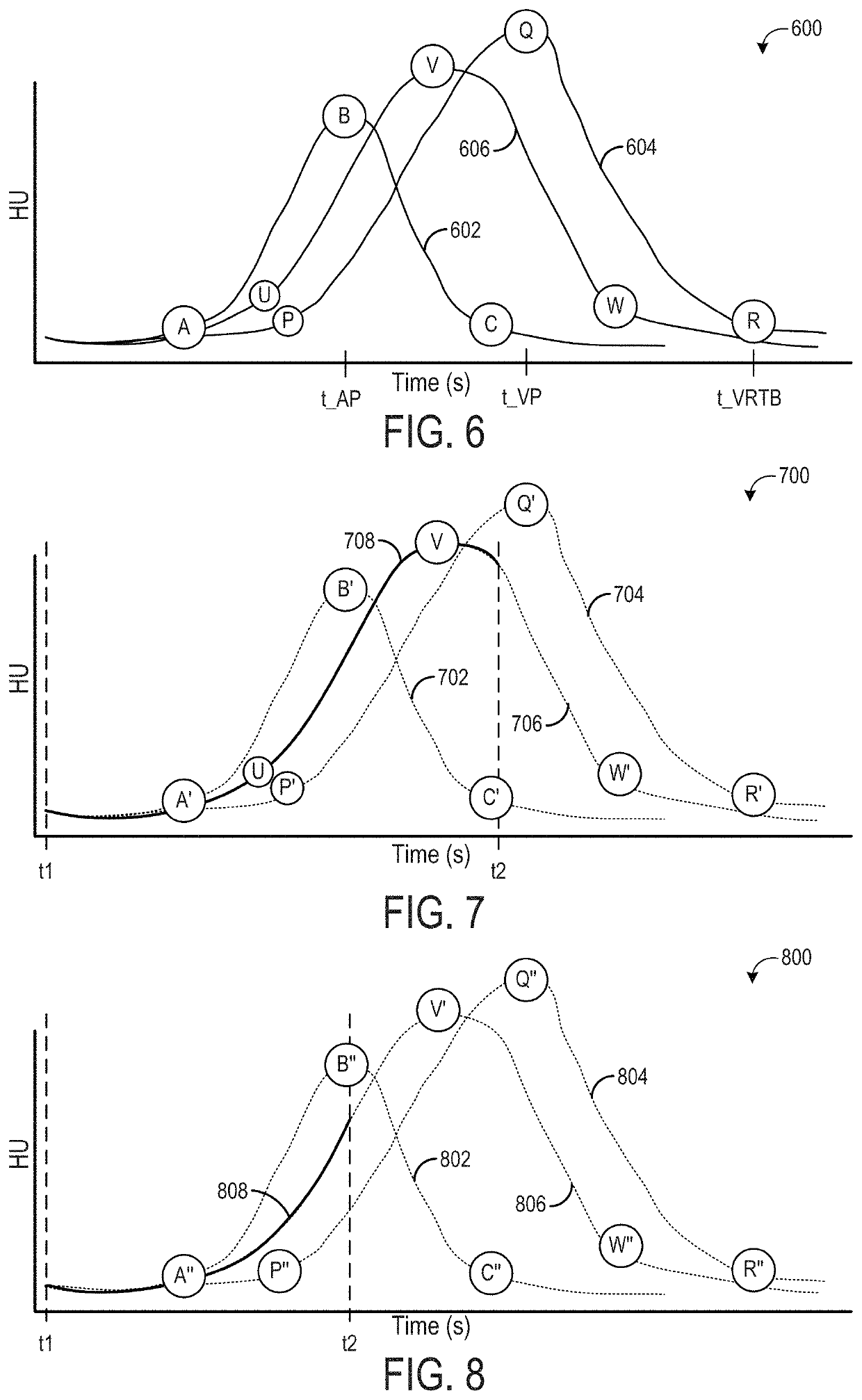Methods and systems for an adaptive five-zone perfusion scan
a perfusion scan and adaptive technology, applied in the field of non-invasive diagnostic imaging, can solve the problem of taking five minutes to achieve the effect of being able to adjust to the environment and the environment in real tim
- Summary
- Abstract
- Description
- Claims
- Application Information
AI Technical Summary
Benefits of technology
Problems solved by technology
Method used
Image
Examples
Embodiment Construction
[0027]Some diagnostic imaging protocols, such as protocols to diagnose acute stroke in a patient, include one or more contrast scans, where a contrast agent is administered to the patient prior to the diagnostic imaging scan. These diagnostic imaging protocols may include two contrast scans, such as a computed tomography (CT) angiography (CTA) scan followed by a CT perfusion (CTP) scan. In a CTA followed by a CTP (or in a CTP followed by a CTA), the decision of when to administer the second contrast agent bolus may be challenging, and if timed incorrectly, may result in non-diagnostic images and / or undesired patient outcomes. For example, if the second contrast agent bolus is administered too soon after the first contrast scan, diagnostic image quality of images acquired during the second contrast scan may be degraded due to venous contrast contamination from the first contrast agent bolus. However, if the second contrast agent bolus is administered too late after the first contrast...
PUM
 Login to View More
Login to View More Abstract
Description
Claims
Application Information
 Login to View More
Login to View More - R&D
- Intellectual Property
- Life Sciences
- Materials
- Tech Scout
- Unparalleled Data Quality
- Higher Quality Content
- 60% Fewer Hallucinations
Browse by: Latest US Patents, China's latest patents, Technical Efficacy Thesaurus, Application Domain, Technology Topic, Popular Technical Reports.
© 2025 PatSnap. All rights reserved.Legal|Privacy policy|Modern Slavery Act Transparency Statement|Sitemap|About US| Contact US: help@patsnap.com



